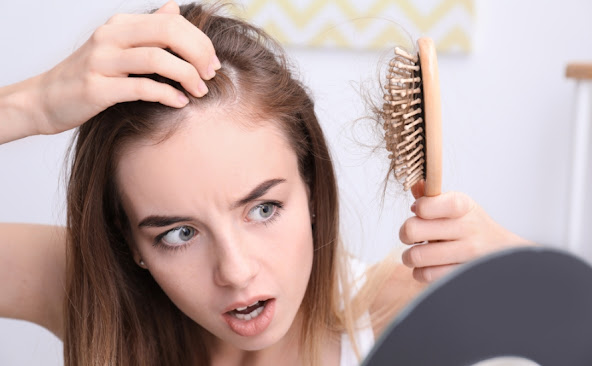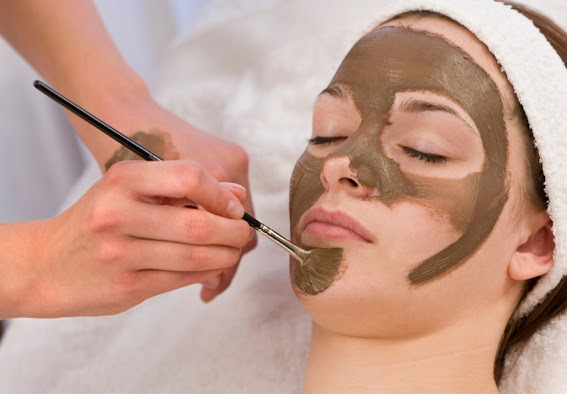Featured
- Get link
- X
- Other Apps
Hair Fall Treatment Options – A Complete Guide
Hair fall can be a distressing issue that affects both men and women. The good news is that there are numerous treatment options available to address hair loss and promote healthy hair growth. In this comprehensive guide, we will explore various treatment options for hair fall, providing you with valuable information to help you make informed decisions and take steps towards regaining fuller, healthier hair. You can also avail salon services at home to get proper hair treatment.
Understanding Hair Loss
Before delving into the treatment options, it's important to understand the common causes of hair loss. Hair fall can be attributed to factors such as genetics, hormonal imbalances, nutritional deficiencies, scalp conditions, stress, and certain medical conditions. Identifying the underlying cause of your hair loss can guide you towards the most appropriate treatment approach.
Over-the-Counter Treatments
1. Minoxidil
Minoxidil, available in topical solution or foam form, is an FDA-approved treatment for hair loss. It works by stimulating hair follicles, prolonging the hair growth phase, and promoting regrowth. Apply minoxidil directly to the scalp as directed by the product instructions. Results may take several months, so consistency is key.
2. Finasteride
Finasteride is an oral medication that is primarily used to treat male pattern baldness. It works by reducing the production of dihydrotestosterone (DHT), a hormone associated with hair loss. Finasteride requires a prescription and should be taken under medical supervision.
Natural Remedies
1. Scalp Massage
Regular scalp massages can help improve blood circulation to the hair follicles, promoting hair growth. Gently massage your scalp using circular motions for a few minutes daily. You can use natural oils like coconut, almond, or jojoba oil to enhance the massage's benefits.
2. Essential Oils
Certain essential oils have shown promise in promoting hair growth and reducing hair fall. Examples include rosemary oil, peppermint oil, and lavender oil. Dilute a few drops of the chosen essential oil with a carrier oil and massage it into your scalp. Leave it on for a few hours or overnight before washing it out.
3. Aloe Vera
Aloe vera possesses soothing and hydrating properties that can nourish the scalp and promote hair growth. Extract fresh aloe vera gel from the plant and apply it directly to the scalp. Leave it on for 30 minutes to an hour before rinsing it off. Repeat this process regularly for optimal results.
Diet and Nutrition
1. Balanced Diet
Eating a well-balanced diet that includes protein, vitamins, minerals, and healthy fats is essential for healthy hair growth. Include foods such as eggs, fish, nuts, leafy greens, fruits, and whole grains in your diet. Additionally, ensure you are getting enough iron, zinc, and vitamin D, as deficiencies in these nutrients can contribute to hair loss.
2. Protein Intake
Hair is primarily made up of a protein called keratin. Ensuring an adequate intake of protein is crucial for healthy hair growth. Include lean meats, poultry, fish, legumes, and dairy products in your diet to meet your protein needs.
Professional Treatments
1. Platelet-Rich Plasma (PRP) Therapy
PRP therapy involves drawing a small amount of blood, processing it to concentrate platelets, and injecting the platelet-rich plasma into the scalp. Platelets contain growth factors that can stimulate hair follicles and promote hair regrowth. Multiple sessions may be required to achieve optimal results.
2. Hair Transplantation
Hair transplantation is a surgical procedure that involves removing hair follicles from one area of the scalp (typically the back or sides) and transplanting them into areas with thinning or no hair. It is an effective and long-lasting solution for hair loss, but it should be performed by a qualified and experienced professional. Yet, it is always better to use natural remedies or get hair treatment at home to save money and time.
- Get link
- X
- Other Apps
Popular Posts
Get Glowing Skin at Home with Easy-to-Make Face Masks
- Get link
- X
- Other Apps
Everything You Need To Know About Booking a Makeup Artist
- Get link
- X
- Other Apps



Comments
Post a Comment